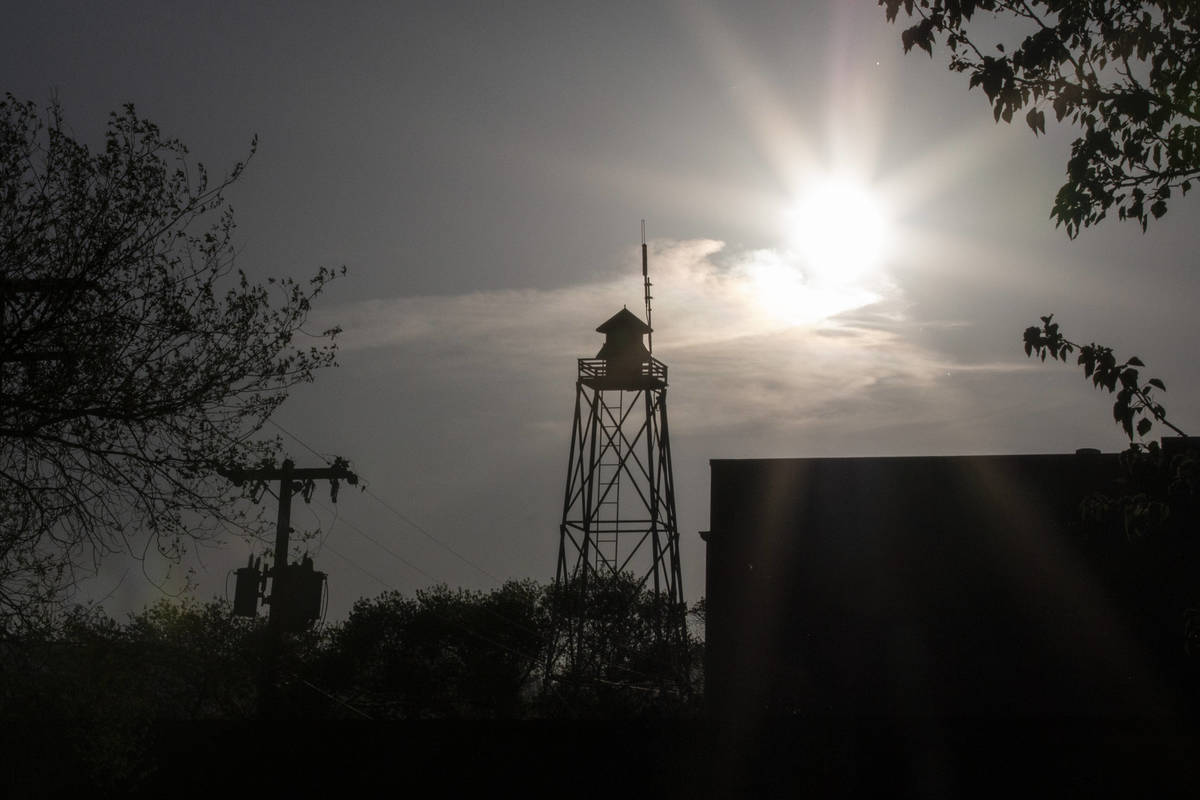In Nevada town, a racist past cries out — every day
CARSON CITY — Myrton Running Wolf noticed an unspoken tension not long after moving to Gardnerville as a high schooler nearly four decades ago.
A member of the Blackfeet Nation who grew up in Reno before moving to the small town tucked along the eastern front of the Sierra Nevada, Running Wolf was unaware of the town’s long history of discrimination against Native Americans.
“There was animosity there that was palpable. You could feel it,” said Running Wolf, an assistant professor of race and media at the University of Nevada, Reno.
That animosity was something Running Wolf soon experienced firsthand. Some schoolmates took to calling him “the good Indian.” He can vividly recall the day he was sitting in chemistry class when a baseball coach from the school walked into the classroom “and basically beat the crap out of me,” bloodying his lip and nose right in front of his classmates and teacher.
“Nobody did anything. Nobody said anything,” Running Wolf said.
For more than 60 years, Gardnerville and nearby Minden were “sundown towns” — communities where nonwhite people were excluded from living that are most commonly associated with the South and Midwest as tools to keep Black people out of all-white enclaves.
In Douglas County, where both towns are located, the sundown ordinance took aim at Native Americans, requiring them to leave town by 6:30 p.m. — a half-hour after a town siren sounded each night.
The county’s ordinance stayed on the books until it was repealed in 1974.
The siren, however, has continued sounding at noon and 6 p.m. nearly every day since.
That siren’s blare has caught the attention of state lawmakers. Assemblyman Howard Watts, D-Las Vegas, last month amended a bill that would force schools to get rid of racially discriminatory mascots to also include a ban on any siren, bell or alarm that was previously used at specific times to signal when nonwhite people needed to leave town. The amended bill, Assembly Bill 88, was approved by the Senate Education Committee last week and awaits a vote on the Senate floor.
Minden’s siren, Watts said, is “an outdated relic that needs to be addressed.”
Sirens off and on
The Record Courier reported that in 2006 Douglas County decided to turn the sirens off, with then-County Manager Dan Holler saying at the time that it was a gesture to help improve relations between the county and the Washoe Tribe.
That lasted just two months, as the county voted to restore the siren, this time to honor emergency personnel.
But declaring that the siren now wails for first responders doesn’t change what that sound means to those who know the history of the town, Watts said.
“It is similar in some ways to people who display the Confederate flag and claim that they do it for a reason that is not racially discriminatory,” Watts said. “We just have to recognize that for many people in this country — and speaking as somebody who’s descended from enslaved people in this country — that is hurtful to see.”
The siren came under renewed scrutiny in the summer of 2020 as Minden found itself in the spotlight after heated clashes between Black Lives Matter protesters and supporters of local law enforcement.
In August, Serrell Smokey, chairman of the Washoe Tribe, posted a video on Facebook talking about why they have fought to rid the siren from the town, which is located on the tribe’s ancestral land.
“It’s putting an end to this living piece of historical trauma; that historical trauma affects my people still to this day, the Washoe People,” Smokey said. “It’s more than just shutting a siren down. It’s about acknowledging the history of this town, acknowledging the fact that there was a huge amount of racism, a huge amount of discrimination towards nonwhite citizens, mainly the Washoe people that lived in this area.”
Douglas County Manager Patrick Cates declined to comment about the siren or the legislation for this story.
Minden Town Manager J.D. Frisby could not be reached for comment Friday, but told the Reno Gazette-Journal in early May that the town’s 6 p.m. siren was unrelated to the county’s 6:30 p.m. sundown ordinance.
Frisby added that many in the town grew up hearing the siren as a sort-of “dinner bell” and would have strong feelings about seeing it go.
“Where does it stop, you know?” Frisby said. “I could tell you the Lutheran bells that chime all day long are offensive to me, but being offended is a choice. At what point do we just roll over and give up to everything someone is offended by?”
UNLV law professor Addie Rolnick, who specializes in Indigenous rights and critical race theory, said that there is really no way to separate the siren from the town’s racist history.
“That really is the only history of being a sundown town, the story of racial exclusion and the threat of violence. Anything connected to it, there is no other meaning to associate with it,” Rolnick said.
When it comes to laws and practices aimed at specific groups of people such as sundown towns, Rolnick said, “the only way to think about them is from the perspective of those targeted by those ordinances.”
Thousands of sundown towns
Historian and sociologist James Loewen, who authored a book on the history of sundown towns in 2005, estimated that there were as many as 10,000 such towns across the country at their peak in 1970.
Rolnick said it’s important to understand the “purposeful reason” those ordinances were enacted.
“What you know by a town designating itself this way, is that it’s a town telling you that it’s for white people,” Rolnick said. “That’s the only thing you were doing with a sundown town. It was to say, ‘We are not for you and you are unsafe if you stay here.’”
Douglas County’s ordinance said that any Native Americans who stayed in town past 6:30 p.m. would be guilty of a misdemeanor and could face a $25 fine, jail time or both. But the legal consequences were only part of the threat faced by those targeted by sundown ordinances, Rolnick said.
The history of sundown towns is littered with violence being directed toward those targeted by the ordinances who did stay past sundown, Rolnick said. Sometimes it was law enforcement. But often, Rolnick added, those ordinances gave an unofficial license to the town’s residents to terrorize people of color after dark.
“Across the whole history, it’s a marriage of a formal rule and informal network of violence,” Rolnick said.
In Minden, that evening siren still serves as a living sign of those times and that those tensions remain, “a reminder that you stay over there, and we stay over here,” Running Wolf said.
“It feels like getting the crap kicked out of me all over again,” he said of hearing the siren now. “Those underlying feelings are alive today as they were back then.”
Contact Capital Bureau Chief Colton Lochhead at clochhead@reviewjournal.com. Follow @ColtonLochhead on Twitter.




















